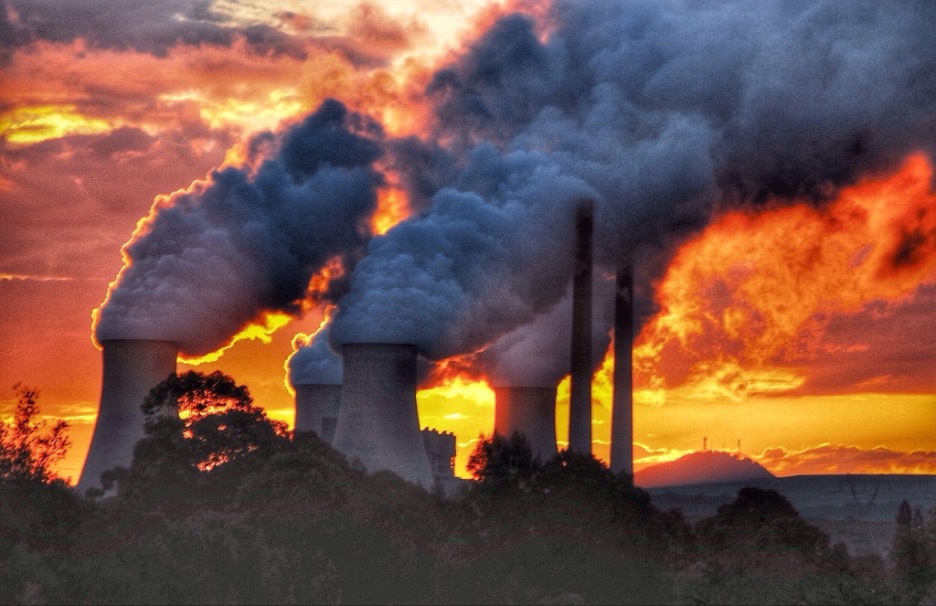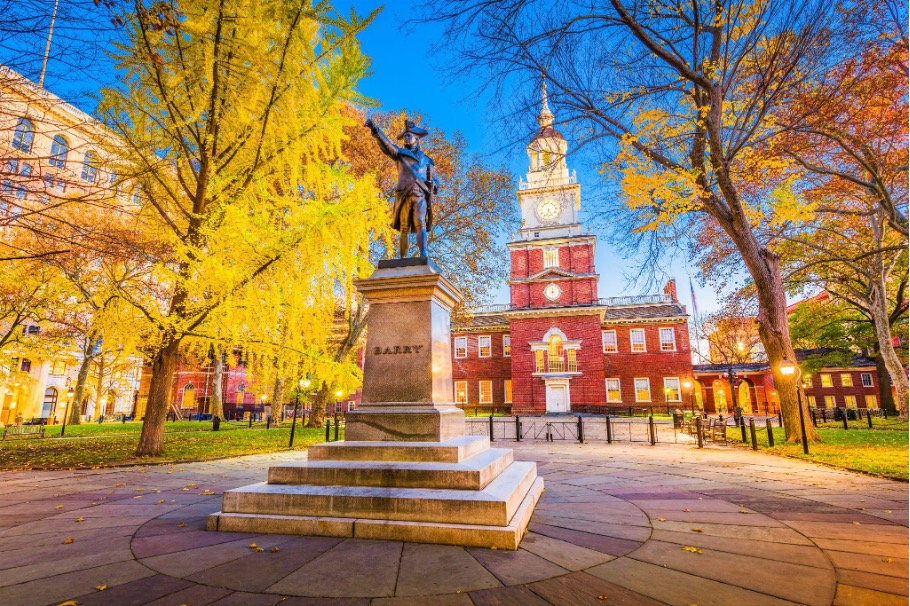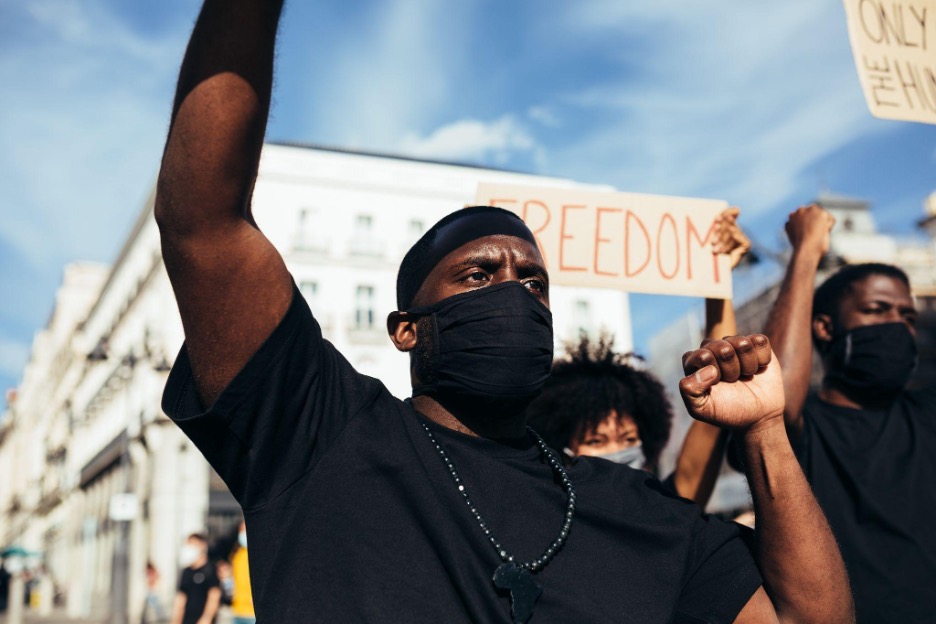By Dylan Lewis
Incarceration has always had environmental repercussions (and vice versa), but even more important are the people who are bearing the burden of those impacts.
Black communities across the country are seriously affected by the carceral system – nationally, one in 81 Black adults in the U.S. is serving time in state prison. When we talk about environmental justice, we cannot separate the carceral system from our climate as the two are inextricably linked – and yes, this applies to ecoWURD’s home city of Philadelphia and throughout the Commonwealth of Pennsylvania, both clear examples of what’s happening throughout the country.
Discussing that and more was Adam Mahoney of Capital B Magazine, who joined Charles Ellison on ecoWURD Magazine to discuss the jail boom in the midwest. His recent article from Capital B, “Across the Midwest, Counties Are Building New Jails on Toxic Land,” explores the push to build facilities on contaminated and polluted lands. Mahoney explained that money is what is ultimately driving these projects. Governments are still reaping the benefits of Covid relief funds and viewing the unused toxic land as a site for revenue-producing jails. For example, in Cleveland a $750 million jail is being built on an old oil refinery.
This boom in jail construction does not only hurt those who will be housed within the facility, but it also puts construction workers and, later, prison staff at risk for serious diseases and long-term health issues. “It’s not about being healthy,” Mahoney told ecoWURD, “when we think about incarceration and rehabilitation, that’s what is usually sold, but it gets muddy when you say ‘we’re building this to better our community. We’re doing this to better people’s lives,’ but we’re building it on a site that will quite literally do the opposite in terms of environmental health and public health.”
What about Pennsylvania?

Pennsylvania is not the Midwest, but we have to question what’s going on in our own state when neighbors in Ohio are willing to build jails on toxic sites. Within the past 10 years, there have been several instances where state facilities have either been built on or near a site so toxic that it had disastrous effects on incarcerated peoples.
In 2014 the Abolitionist Law Center published an investigative report on State Correctional Institution (SCI) Fayette about the toxic living conditions within the prison. The report reads:
Surrounded by ‘about 40 million tons of waste, two coal slurry ponds, and millions of cubic yards of coal combustion waste,’ SCI Fayette is inescapably situated in the midst of a massive toxic waste dump. Over the past year, more and more prisoners have reported declining health, revealing a pattern of symptomatic clusters consistent with exposure to toxic coal waste: respiratory, throat and sinus conditions; skin irritation and rashes; gastrointestinal tract problems; pre-cancerous growths and cancer; thyroid disorders; other symptoms such as eye irritation, blurred vision, headaches, dizziness, hair loss, weight loss, fatigue, and loss of mental focus and concentration.
The state of Pennsylvania prides itself on having “a distinguished reputation in penology” – yet, there is nothing distinguished about sentencing people to suffering and, ultimately, death. There is nothing “rehabilitating” about giving people serious, long-lasting health conditions. In fact, the Commonwealth is considered the birthplace of this country’s (very broken) carceral system. Is the unjust treatment of incarcerated people surprising given Pennsylvania’s roots in punishment? No. However, it could set an example for other states if the oldest incarcerator assessed and corrected its own failings.
More recently, State Correctional Institutions Frackville, Mahoney, and Phoenix (formerly known as Graterford) all had issues with unusable water. The water supply for Frackville and Mahoney is situated amid abandoned/active mines and mountaintop removal activity, which is often associated with disastrous environmental effects. The water at Graterford Prison tested positive for the carcinogenic toxin chromium-6. The building has since been renovated, but it still resides in the same location. These are just some of the known examples of the environmental injustice that occurs within the Pennsylvania state prison system. The state’s beloved coal country also built its industry on the premise of destroying the land for economic gain and now the government has continued the tradition by destroying the health of its citizens.
How about our City of Brotherly Love?

The Philadelphia Department of Prisons operates four facilities all located in the Northeast section of Philadelphia. This cluster of prisons is located less than two miles away from the Metal Bank Superfund site. According to the Philadelphia prison population report, 72 percent of the prison population is Black whereas the city is about 41 percent Black; 9 percent of the prison population is white when the city is 39 percent white. Prisons located near a superfund site combined with the majority of the incarcerated population in the city being Black is clear environmental racism at work.
This is an instance in which the oppression Black communities face is compounded by intersecting issues (see intersectionality). We cannot say that incarceration is separate from the environment. We see the link between poverty and incarceration as well as the link between poverty and the environment, but too often we detach the political/economic from the environmental. In reality, all of these forces are operating at the detriment of our community.
Who are the people?

Angela Davis was right when she wrote in her essay Masked Racism: Reflections on the Prison Industrial Complex that “prisons do not disappear problems, they disappear human beings.” The Constitution celebrates “We the People,” but what happens when our governments continuously strips people of their personhood?
The eighth amendment reads: “Excessive bail shall not be required, nor excessive fines imposed, nor cruel and unusual punishments inflicted.” Building and maintaining prisons and jails on toxic sites is cruel, unusual, and excessive. Someone could finish their sentence and be left with severe health problems as a result of the environment. No amount of revenue is worth leaving people with debilitating illnesses – but in America we treat incarcerated people like they are disposable, like a price can be put on their lives.
Article I Section 27 of the Pennsylvania constitution states:
The people have a right to clean air, pure water, and to the preservation of the natural, scenic, historic and esthetic values of the environment. Pennsylvania’s public natural resources are the common property of all the people, including generations yet to come.As trustee of these resources, the Commonwealth shall conserve and maintain them for the benefit of all the people.
Our state constitution clearly reads that “the people” have a right to a clean and safe environment. Is it really saying that incarceration means that someone is no longer a person? Building prisons on toxic sites indicates that a state and more broadly, this country, believes they have the right to punish past the prison walls.
We must make the shift from a framework that centers punishment to one that prioritizes rehabilitation and the humanity of incarcerated persons. This cannot exist within our current prison system. Perhaps, we should dare to reimagine something new – a way of thinking that removes the focus from profit and punishment and gives the power back to the people.



